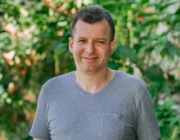. 12/1/2021. “Tailored Optical Clock Transition In 40Ca+”. Science Direct, 18. https://doi.org/10.1016/j.measen.12/1/2021. 100326. Publisher's Version
2021
. 4/1/2021. “Optimal Frequency Measurements With Quantum Probes”. Npj Quantum Information, 7, Pp. 55. https://doi.org/10.1038/s41534-021-00391-5. Publisher's Version
. 6/3/2021. “Low Field Nano-Nmr Via Three-Level System Control”. Physical Review Letters, 126, 22. https://doi.org/10.1103/PhysRevLett.126.220402. Publisher's Version
. 1/19/2021. “Precise Spectroscopy Of High-Frequency Oscillating Fields With A Single-Qubit Sensor”. Physical Review Applied, 15, 1. https://doi.org/10.1103/PhysRevApplied.15.014031. Publisher's Version
. 4/1/2021. “Optimal Frequency Measurements With Quantum Probes”. Npj Quantum Information . https://doi.org/10.1038/s41534-021-00391-5. Publisher's Version

